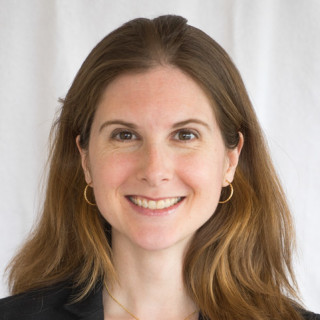
It was a beautiful spring morning, one where the air smells like grass and you know when you inhale that it’s going to be a hot day. Walking to the hospital, I had to navigate around small clusters of goslings. They sleep in piles of four or five on cool nights, their yellow bodies pressed together for warmth and their heads hidden beneath their wings. The goose parents hissed me away as I gingerly stepped around their offspring.
The day was off to a quiet start in the pediatric ED. I nursed a cup of green tea and worked on documentation from the previous day. A man came to refill the cart with suture materials, humming as he went drawer by drawer. I pressed refresh on the list of patients — still no one in the waiting room.
And then, all of a sudden, I heard faint, high-pitched wails. It must be the adult side, I thought. It didn’t sound like a child. The wails grew closer. “Trauma!” someone yelled. The rest unfolded in slow motion. I rushed to the trauma bay and struggled outside the door to get my head through the yellow protective gown. I put on my mask upside-down, with the metal wiring rubbing against my chin. It would have to do.
Inside I heard the counting of compressions already underway and saw a small baby boy lying motionless on the table. I estimated the weight with Broselow tape and watched for orders from the attending, our team leader. Two nurses drew up medications and another inserted an intraosseous line in the baby’s left tibia. He didn’t flinch during this process. The parents stood in the corner, holding each other and sobbing.
I peeled away from the table and walked over to them. He was a junior, “named after his daddy,” his mother told me. “He’s the easiest baby. Just perfect. He’s starting to try to talk to us. Babbling up a storm.” The third round of epinephrine was being given. “And he’s moving all over the place! He can even roll now.” I felt my own daughter kicking as they spoke with me about their son. I hoped the parents couldn’t see my growing belly underneath my protective gown. “I’m sorry,” I said. “I’m so sorry.”
“Let’s stop compressions,” the attending instructed. The counting stopped abruptly and the room grew quiet. “Asystole. Time of death 8:06.” The team backed away from the table. We filed out the backdoor, eyes downcast. Nobody said anything or looked at one another. The attending walked over to speak with the parents.
Outside the door, a child life specialist asked me for the story. “Is there anything you can tell me about him, about what happened, before I go in there?” she asked. I paused. “He was a perfect baby,” his parents had told me. “Beloved.” I repeated this and choked up before I could say more. But was there any other information she really needed?
I excused myself and walked to the bathroom. Once there, I removed my surgical mask and sobbed, gripping the metal bar by the sink. I splashed cold water on my face and looked at myself in the mirror. I wondered how long I could stand there. Was five minutes enough to honor this family? I looked at my watch. It was 8:22. I decided to return.
There’s no blueprint for this. We learn all about codes in the classroom — how frequently to administer breaths, how many centimeters to compress the chest wall, what medications to give and when. But there’s no instruction manual for what happens afterwards, no guidance about how to return to work or what to say.
One by one, members of the extended family came back to see the parents and pay their respects to the baby, now swaddled in a blanket. The charge nurse kept track of those coming and going to ensure that a crowd didn’t accumulate. In COVID times, grieving is difficult and messier than usual.
The parents left the hospital last. They walked as a unit, their bodies hunched over each other. I imagined them returning to their car, to the car seat in the back and the pacifiers, toys, and blankets strewn about. By now, it would be warm outside. I glanced up at the board: two in the waiting room with chief complaints “ear pain” and “vomiting.” I opened a note and prepared to see the next patient.
Phoebe Prioleau, MD, is a third-year pediatrics resident at UH Rainbow Babies and Children’s Hospital in Cleveland, OH. Before medical school, she pursued graduate studies in French literature and art history and has published creative work in Doximity, The Living Hand, Annals of Internal Medicine, and The Journal of Medical Humanities, among other places. She has no conflicts of interest to disclose. Phoebe is a Doximity 2019-2020 Fellow.
Image: tigerhbu / shutterstock






